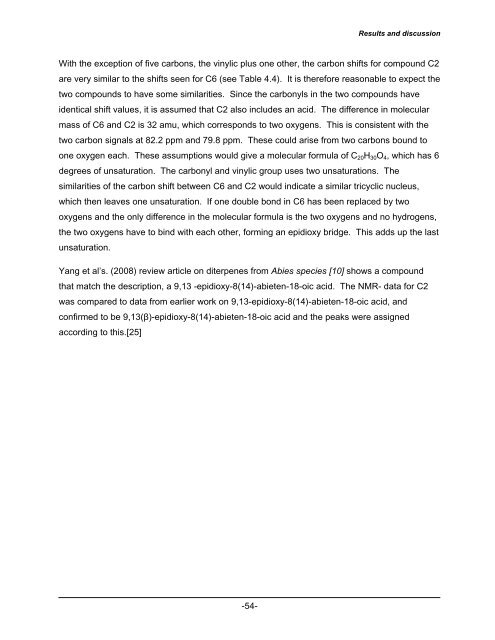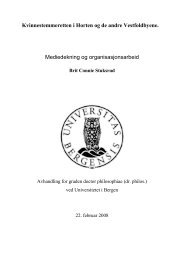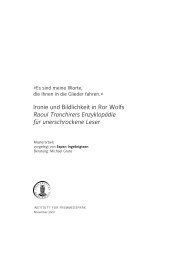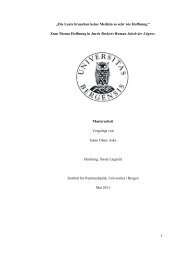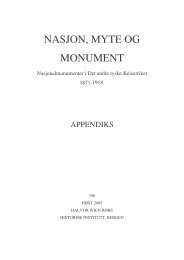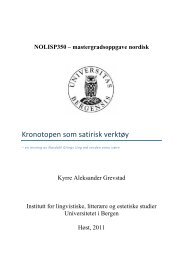Herbal plants used in TCM as a source of compounds with ... - Bora
Herbal plants used in TCM as a source of compounds with ... - Bora
Herbal plants used in TCM as a source of compounds with ... - Bora
You also want an ePaper? Increase the reach of your titles
YUMPU automatically turns print PDFs into web optimized ePapers that Google loves.
Results and discussionWith the exception <strong>of</strong> five carbons, the v<strong>in</strong>ylic plus one other, the carbon shifts for compound C2are very similar to the shifts seen for C6 (see Table 4.4). It is therefore re<strong>as</strong>onable to expect thetwo <strong>compounds</strong> to have some similarities. S<strong>in</strong>ce the carbonyls <strong>in</strong> the two <strong>compounds</strong> haveidentical shift values, it is <strong>as</strong>sumed that C2 also <strong>in</strong>cludes an acid. The difference <strong>in</strong> molecularm<strong>as</strong>s <strong>of</strong> C6 and C2 is 32 amu, which corresponds to two oxygens. This is consistent <strong>with</strong> thetwo carbon signals at 82.2 ppm and 79.8 ppm. These could arise from two carbons bound toone oxygen each. These <strong>as</strong>sumptions would give a molecular formula <strong>of</strong> C 20 H 30 O 4 , which h<strong>as</strong> 6degrees <strong>of</strong> unsaturation. The carbonyl and v<strong>in</strong>ylic group uses two unsaturations. Thesimilarities <strong>of</strong> the carbon shift between C6 and C2 would <strong>in</strong>dicate a similar tricyclic nucleus,which then leaves one unsaturation. If one double bond <strong>in</strong> C6 h<strong>as</strong> been replaced by twooxygens and the only difference <strong>in</strong> the molecular formula is the two oxygens and no hydrogens,the two oxygens have to b<strong>in</strong>d <strong>with</strong> each other, form<strong>in</strong>g an epidioxy bridge. This adds up the l<strong>as</strong>tunsaturation.Yang et al’s. (2008) review article on diterpenes from Abies species [10] shows a compoundthat match the description, a 9,13 -epidioxy-8(14)-abieten-18-oic acid. The NMR- data for C2w<strong>as</strong> compared to data from earlier work on 9,13-epidioxy-8(14)-abieten-18-oic acid, andconfirmed to be 9,13(β)-epidioxy-8(14)-abieten-18-oic acid and the peaks were <strong>as</strong>signedaccord<strong>in</strong>g to this.[25]-54-


